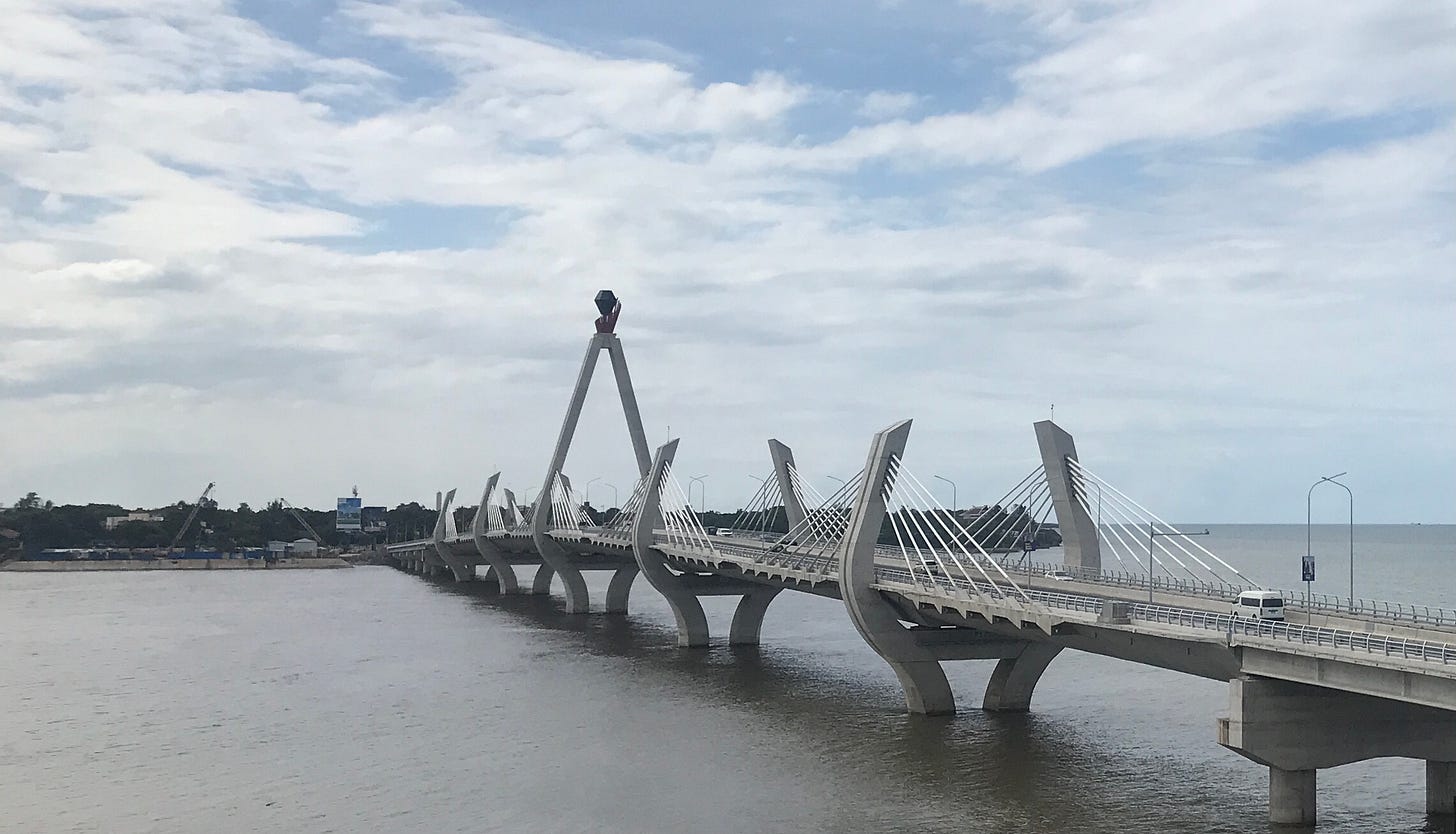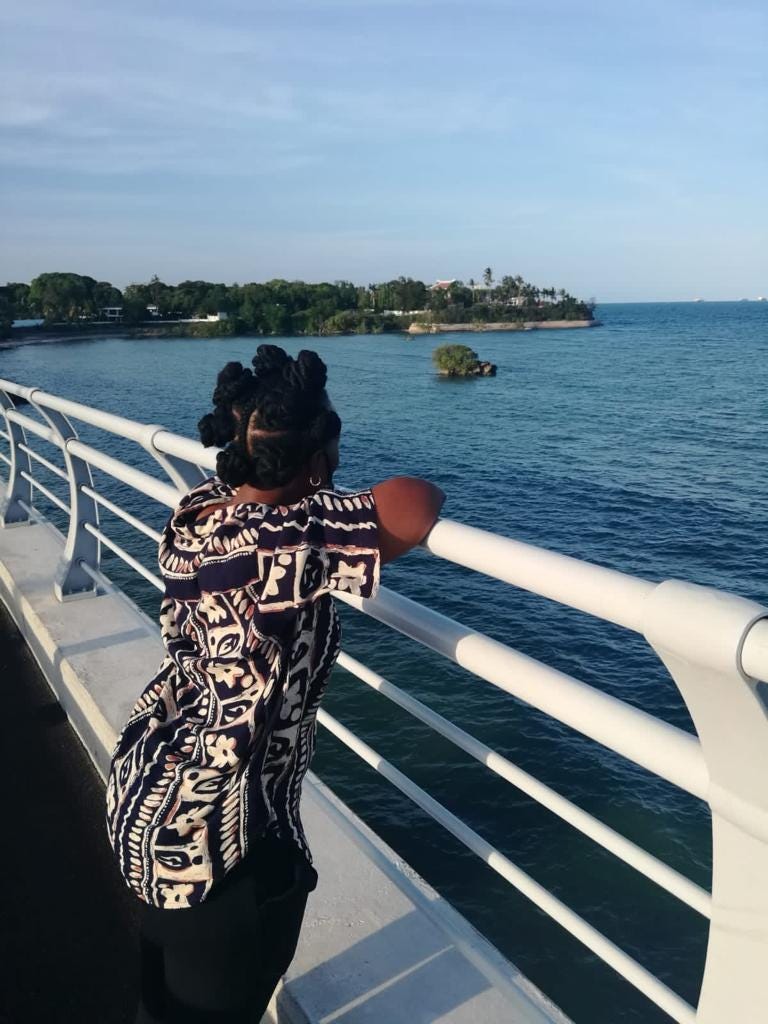resting in liminality >> exhale
A boat cannot go forward if each rows his own way- tanzanian proverb
A musical 🎶 reminder that your flava is distinctive and savory:
What if there is no other space but liminality? What if everyone is experiencing some degree of liminality? Like a collective unspoken rite of passage that life won’t let you opt out of?
I’ve been ruminating on these questions, as I’ve deepened my conversations in community around conceptualizing the liminal space, and its reliability. Last month, I launched the first of a 3 part conversation series entitled, The Liminal Space: Honoring Rites of Passage in a Journey of Self Discovery [e l a b o r a t e 😜is my middle name]. The conversation invites us to interrogate and explore rites of passage as a portal of embodied liberation. Its foci are African descendants who grew up in socially unconventional environments. *Translation: I have so many theories about how place impacts how I [we] show up in the world, and I want to learn from the stories of others.
I have also been thinking about physical representations of liminality, and how urban design can complement or discourage the bridging of worlds. Kwa mfano1, I believe that among former President Dr. John Pombe Magufuli’s top 3 legacies to Tanzania is the construction of the Tanzanite Bridge. Before its inception, I found traveling within Dar Es Salaam quite difficult. I often felt like my decision to spend 30-40ish minutes in transit meant committing to being wherever I needed to go. Like I was stuck. It also made me feel like I was traversing between two worlds [literally and figuratively].
I’d find myself leaving the hustle and bustle of Kariakoo market where the streets are uncomfortably overcrowded, the fragrance is a cross between stale urine, fried maandazis and the luxurious oud my Americanah Tanga-line aunties used to wear growing up in Springfield, Massachusetts. The ambience of mama ntilie’s on every corner dishing out plates of “street food” that are made in foodie dreams— it is truly a sight to behold. While on one hand, I am overwhelmed by the grind: the aggressive sellers, the uninvited touching, the ‘cat-calling’ [not sure who the 😼 is, though], the pikipiki’s2 whizzing so close to my body, I’m afraid I may be hit [again]. The other hand is deeply grateFULL that my upbringing propels me towards leaning in versus aversion or fear. There are many Tanzanians in the Diaspora who don’t set foot in Kariakoo. For some, it appears be the transcendence into greener pastures. The idea that their new passport or currency affords them the right to no longer actively engage in those spaces. For others, it’s a different type of transcendence -the idea that there is no turning back. The stain of poverty and struggle are constantly met with bleach because the memories are etch-a-sketched into their version of home. However, Kariakoo is the unofficial business hub of Dar Es Salaam, so while you could get that your goods/souvenirs elsewhere, you will find breadth and depth in K-Koo. Therefore, as a way of evading the discomfort— many Diasporans will have a relative, house help, or a ‘plug’ on the inside assist them in purchasing what they need without actually stepping foot in that community. And therein lies the liminality.
As I make my way through the semi-organized chaos, I exhale as I get closer to Aga Kahn hospital because I know I’m in Upanga— and the bridge is not too far. While Tanzanians as a whole, have a set of core values that are innate—irrespective of ethnic group [ie: greeting, language, community care/investment, etc.], they also appear covertly segregated. Akin to my experiences in Baltimore, DC, the Bay etc., there are neighborhoods that are reserved for specific demographics of people. There are also social norms imbedded in how each group interacts with one another. It is a case study. As such, Upanga is a community that inhabits the largest concentration of Indians in the country, which makes this bridge that much more of a connector. Keep in mind that these are 3rd, 4th and 5th+ generation Indian so for many, Tanzania is home 🏡. Many have never even set foot in India. However, many of my experiences with members of the Indian community have been very anti-Black until [oh hey, liminality], they hear my American accent and henceforth, categorize me as “other”. Up until that point though— I’m perceived to be a local [which I happily embrace until I’m provoked to flex [exhale]]. Nevertheless, it is us— Black Tanzanians being in the Upanga space [amid others] that is the beginning of fortified disruption and embodied liberation. I believe Mwalimu would be pleased.
The bridge is 670-metre high and 1.03 kilometers-long3, and even sparkles at night ✨. The intentional sidewalks on either side force us to see one another [even if we don’t want to]. The physical representation of the structure is an undeniable connector between the world of perceived chaos and hustle, to foreign-owned shops and overpriced restaurants along Ali Hassan Mwinyi road- the juxtaposition is uncanny. The number of sellers is significantly smaller at this intersection than where you started, which is how you know the gentrification has begun. The road is also immaculately paved. Once you get to the end of the bridge, there is a structure on the left that appears to house Chinese construction workers, and Nyerere’s family home on the right [not sure if that’s a remor or fact]. As you continue straight, you will pass embassy row [not as extravagant as DC, but it’s fun to see], and folx selling fruit, tissue boxes, maps of Tanzania, and a host of other items that you don’t need, but realize once you turn right at the traffic light that you actually wished you had.
Upon turning you pass opulence, infused with a dabble of socioeconomic hardship. Folx who are differently abled, children who don’t appear to have a caregiver, blind and deaf community members all gather at that turn. Some requiring assistance, others taking the lead in asking for money. Asking to be seen.
Once you continue down the road, you are met with spectacular views of the Indian Ocean. Again; there, at the beach— worlds are enmeshing. Expatriates, local Tanzanians of a variety of ethnicities, tourists, and the like are all there. Gazing at the views. Swimming alongside one another. Enjoying the most delectable mihogo4 in the city. Untangling fear, discomfort, or whatever else impedes on our courage.
This is the freedom.
The peace.
That we are all seeking.
The bridge is a segway for uhuru5 embodied, and I am so glad to be a witness.
Before you go: here’s a mantra to wake yourself up to 🌙:
I focus on what I can control and make peace with what I cannot. I am in charge of my happiness. I release all negative thoughts that do not serve me. My path is clear. My mind is focused. Everything is aligning in my favor. » » courtesy of @wetheurban
Asante mno6 for reading— I can’t say it enough 🙏🏾
On my mama, on my hood,
n
for example
motorcyclist
cassava
freedom
thank you abundantly





